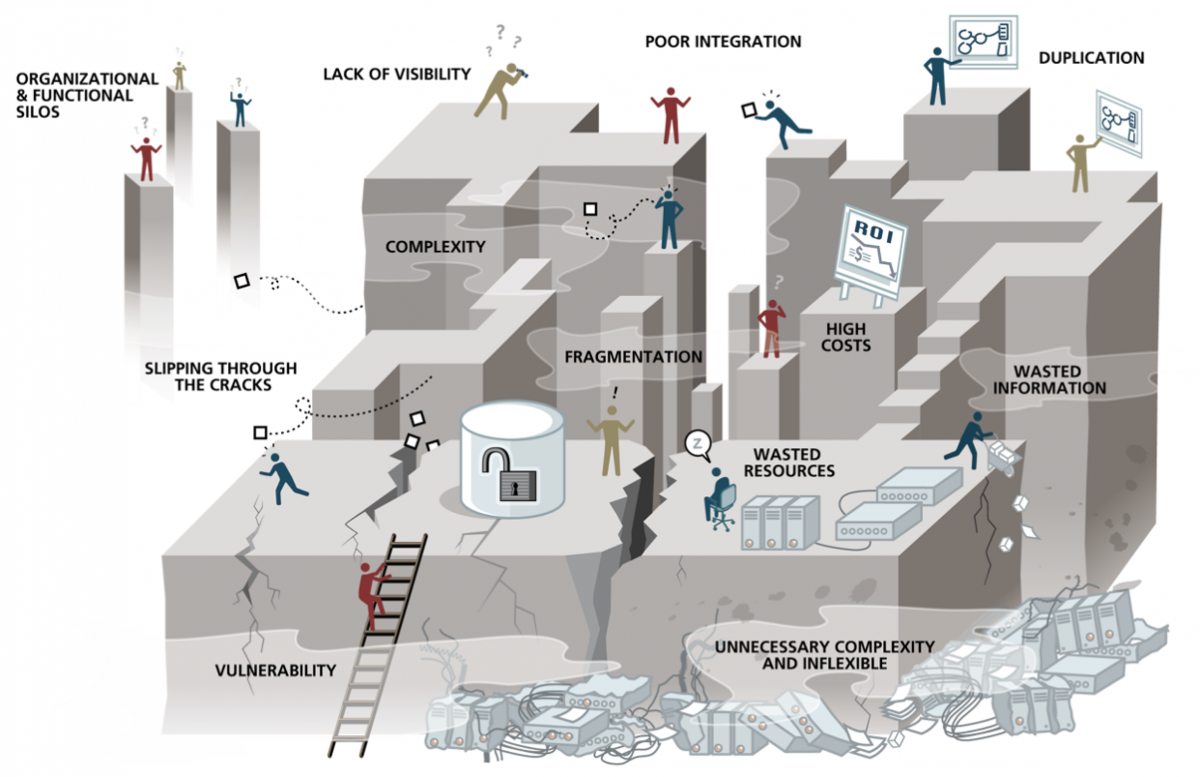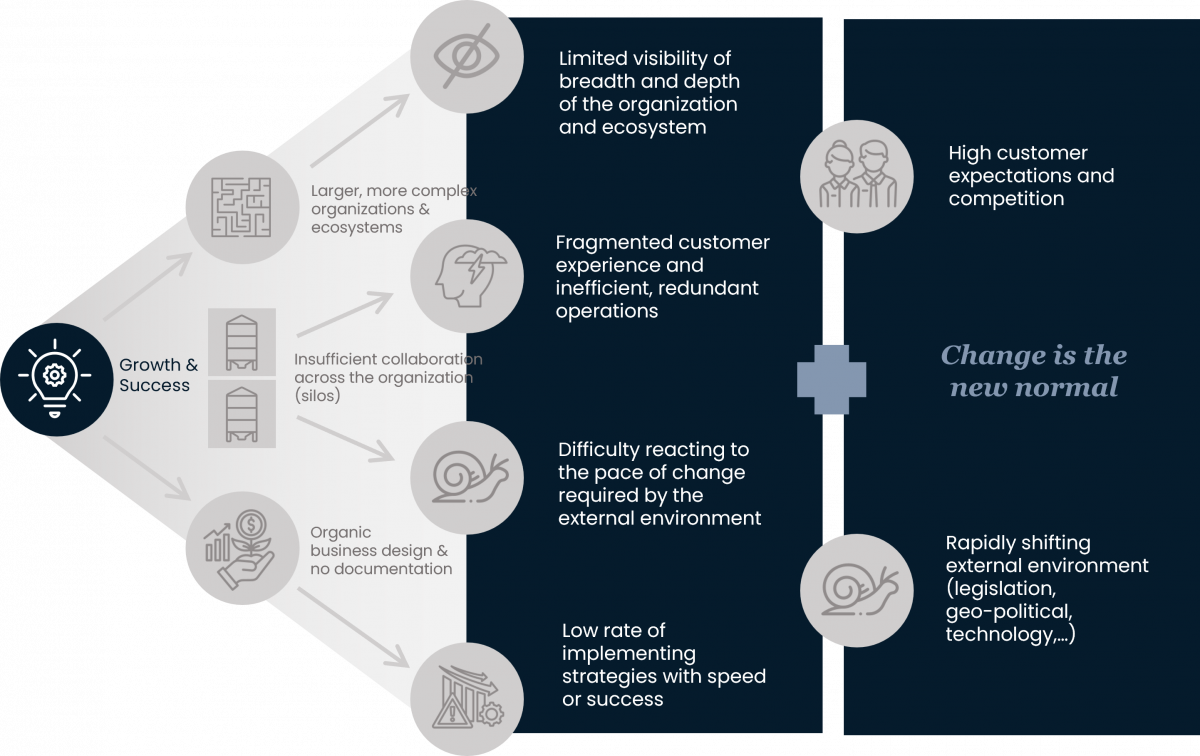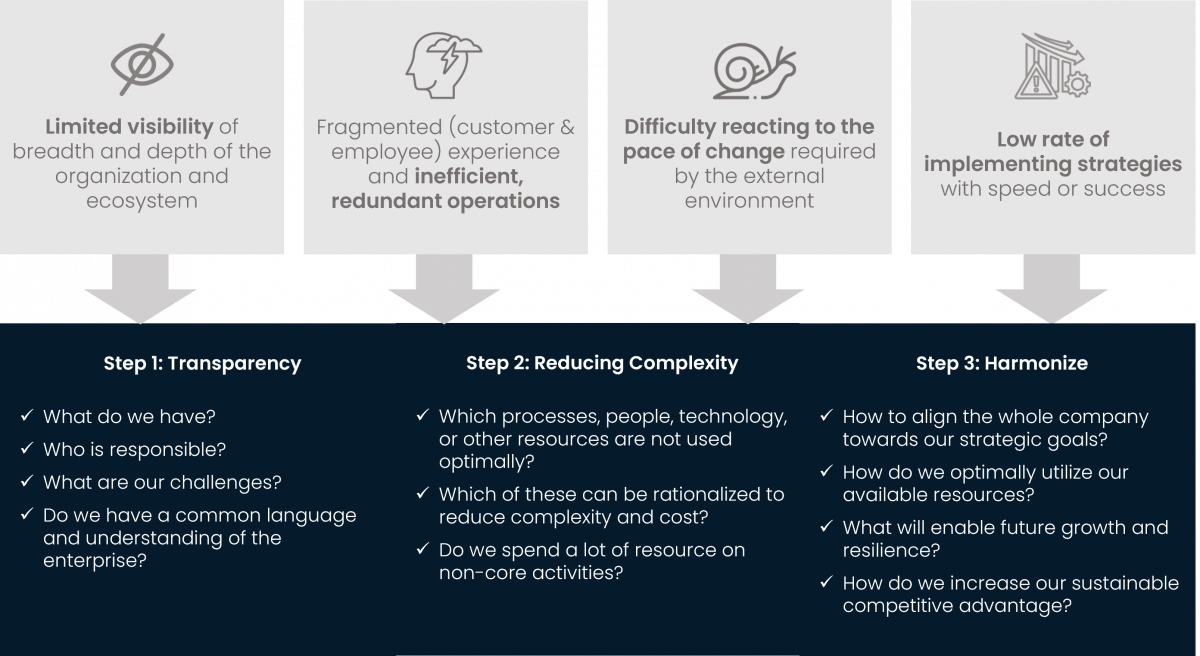
Navigating the Maze of Organizational Growth: The Unseen Challenges of Organic.
The journey of scaling a business, as Alexander Osterwalder succinctly put it, starts with identifying a compelling value proposition that resonates with customers. And with constructing a scalable business model around it. The early days of a startup, for instance, are characterized by a potent mix of innovation, agility, and a laser focus on customer needs. It’s a time of rapid movement, where decisions are often made quickly. Where structures are kept simple. And where technology choices can be as straightforward as acquiring the latest shiny piece with a credit card. Are you navigating the maze of organizational growth with us?
Founders and business leaders thrive in this environment of quick, intuitive decision-making and minimal bureaucratic processes. Driving their companies toward significant growth and market presence. This journey, while most prominently witnessed in startups, is not exclusive to them. Larger companies also experience this in their quest to remain relevant and competitive through innovation, diversification, and retrenchment.
This blog explores the intricate challenges faced during this critical phase of growth. Underscoring the role of Enterprise Architecture (EA) as a strategic tool in guiding businesses through the intricate maze of scaling up. It ensures that the foundational elements that catalyzed initial success are not abandoned. But that they are evolved and refined to support long-term growth and adaptability.
Organically grown complexity
As businesses grow from startups to scale-ups and beyond, they often find themselves struggling with organic complexity. Because that has accumulated in both their business operations and IT systems during their initial push for growth. The strategies and practices that once drove rapid expansion can become tangled in this complexity. Turning from enablers of growth into potential constraints. This emerging reality is frequently marked by practices such as making strategic decisions based on gut feelings. Or operating with increasingly convoluted organizational structures. Even on impulsively adopting new technologies without a long-term strategy.
These methods may have been feasible and effective during the early, more agile days of the company. However, they typically do not scale efficiently in the context of a larger, more complex organization.

These complexities almost always manifest themselves through the same symptoms. They are lack of visibility, organizational & functional silos, poor integration, fragmentation, duplication of resources, etc. Facing these hurdles to growth, a significant transformation becomes imperative.
Businesses must now rethink and evolve their initial business models and organizational frameworks. Moving towards a more structured approach that can support sustainable growth, scalability, and readiness to meet future challenges and complexities.
The four horsemen of organizational growth
- Complexity in Scale: As organizations grow, they often become more complex. This complexity can manifest in the form of larger, more intricate organizational structures and ecosystems. Leading to insufficient collaboration and siloed departments.
- Organic Business Design: Many businesses evolve organically, without proper documentation or strategic planning. This can result in limited visibility of the organization’s breadth and depth. Making it difficult to understand and manage the entire enterprise effectively.
- Fragmented Operations: With growth, companies regularly face fragmented customer experiences and inefficient, redundant operations. These inefficiencies affect customer satisfaction and lead to higher operational expenses.
- Pace of Change: The rapid pace of change in the external environment, including shifts in technology, legislation, and market dynamics, demands a high rate of strategic implementation. However, many organizations struggle to match this increasing pace of change, risking their relevance and competitive edge.
Each of these elements represents significant hurdles in the path of growing businesses. They are critical factors that, if not managed effectively, turn the expansion into a maze of frustration and missed opportunities.

Change is the new normal and at an ever-increasing pace.
Beyond the four horsemen, there’s a prevailing wind that influences all aspects of a business’s journey. It’s the constant and ever-accelerating pace of change. In the modern business landscape, change is not an occasional challenge to be navigated; it is an ongoing reality. This reality is shaped by various factors, for example:
- Exponential Technologies: Advances in technology are occurring at an exponential rate. Artificial intelligence, blockchain, and the Internet of Things (IoT) are reshaping industries, creating new business models, and altering consumer expectations. Organizations must continuously adapt to these technological changes to stay competitive or face the risk of disruption.
- Legal and Regulatory Shifts: New laws and regulations, often responding to technological advances or social changes, are continuously being introduced. Compliance with these regulations requires businesses to be nimble, adapting their processes and policies promptly.
- Sustainability and Social Responsibility: There is an increasing emphasis on sustainability and corporate social responsibility. Consumers and stakeholders are holding companies accountable for their environmental impact and ethical practices. You need to expand the idea of generating value from only Profit, also to including People and the Planet. This shift necessitates a reevaluation of business operations and strategies.
- Competitive Landscape: The competitive landscape is more dynamic than ever. With new entrants disrupting traditional markets and established players pivoting to maintain their dominance. This constant flux requires businesses to be innovative, agile, and forward-thinking.
These forces combine to create an environment where agility, foresight, and adaptability are not just desirable traits. They are essential survival skills. In this landscape, businesses that can anticipate and respond to change will not only survive but thrive.
“If the rate of change on the outside exceeds the rate of change on the inside, the end is near.”
– Jack Welch, ex-CEO of General Electric –
The diminishing returns of growth
Following this understanding of this relentless pace of change, we arrive at a crucial point in our discussion. Which is the paradox of growth. Growth, while the ultimate aim of most businesses, can paradoxically lead to diminishing returns if not managed strategically.
Business expansion with the structure and strategies that facilitated its initial success can hold back further growth and efficiency. Because increased complexity often leads to (bureaucratic) sluggishness, miscommunications, and costs. Impact & risk assessments aren’t accurate enough, making it harder to respond to market changes, innovate, or maintain a competitive edge. The challenge, then, is not merely to grow but to manage and streamline growth effectively.
Navigating Complexity and Aligning for Growth
In the face of growing challenges, businesses need an approach that balances strategic foresight with operational efficiency. This begins with recognizing and addressing three key areas:
- Transparency: Gaining a clear view of the organizational structure, processes, and systems is essential. It involves shedding light on every corner of the organization to identify redundancies, streamline processes, and facilitate informed decision-making.
- Reducing Complexity: Simplifying the organizational structure by rationalizing and aligning processes and systems is crucial. This step is pivotal in enhancing agility and responsiveness. Allowing businesses to adapt quickly to market changes and seize opportunities as they arise.
- Harmonization: Aligning every part of the organization towards common goals and strategies ensures that you use resources optimally and you don’t duplicate efforts. This alignment is integral to sustaining growth, driving innovation, and maintaining a competitive edge.

In addressing these areas, the role of Enterprise Architecture (EA) becomes clear. EA emerges as the strategic tool that provides the framework to achieve transparency. On top of that, it reduces complexity and ensures harmonization across the organization. It offers a structured approach to dissecting and understanding the intricacies of the enterprise. Laying the foundation for sustainable growth and strategic agility. By employing EA, organizations transform their challenges into a coordinated effort. That aligns with their long-term vision and prepares them for the complexities of the future.
Navigating the Maze of Organizational Growth
Enterprise Architecture (EA) is not just an IT strategy. It is a vital business imperative in the modern world of constant change and complexity. In a landscape where adaptability and strategic foresight are key, EA offers a structured approach to managing the intricacies of a growing business. It aligns resources with strategic goals. Ensuring that businesses not only cope with their current scale but are also primed for future challenges and opportunities.
Embracing EA allows founders and business leaders to move beyond the limitations of their initial business models and organizational structures. It enables them to transform these early systems into robust frameworks that support sustainable growth and adaptability. By doing so, businesses are navigating the maze of organizational growth with confidence, turning potential hurdles into stepping stones for success.
For organizations looking to thrive in an ever-evolving business landscape, the integration of Enterprise Architecture into their growth strategy is a necessity. It’s the key to unlocking potential, driving innovation, and securing a competitive edge in an increasingly complex and fast-paced world.
Would you like to talk about navigating the maze of organizational growth? Contact us!
Are you curious about our services? Discover them here.